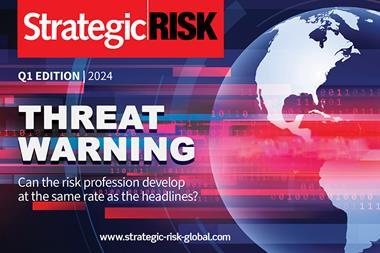It’s clear that freezer failure is going to be a significant risk to the smooth execution of this critical vaccination program
The vaccines have landed and the first jabs are underway – giving a further jolt of confidence to the country’s recovery. Yet with the Pfizer vaccine requiring the infamously cold temperature of -70 degrees Celsius through transport, the supply chain logistics that support this national rollout are complex, with many points of potential failure that could hamper vaccination programs.
In late February, more than 120 doses of the Pfizer COVID-19 vaccine were destroyed in Victoria, after private operator Aspen Health could not verify if the vials had been kept at the correct temperature while being stored at an aged care facility in Melbourne’s west.
While why this happened is not yet known, it’s clear that freezer failure is going to be a significant risk to the smooth execution of this critical vaccination program. In another recent example, a failure at a vaccination clinic in Seattle left healthcare workers scrambling to inject people in the streets before their doses expired.
Fortunately – or unfortunately, depending on how you want to look at it – this isn’t a new problem. Freezer failure is one of the loss drivers we have in the pharmaceutical industry and in research facilities in education and healthcare.
There are lessons for Australia from the stories of freezer failures from across the world. These include some simple measures healthcare facilities can take to ensure that the risk of freezer failure is minimised – whether they are using existing freezers or installing new farms to cope with increased demand.
Governance in focus
One of the big risks with freezers is temperature excursion. The power may not go off but the temperature in the freezer gets too hot or too cold to maintain the quality of the material stored inside.
Ultimately, people will play a major part in minimising the risk of freezer failure and vaccine loss. While it may seem incredibly obvious, proper governance that spells out key responsibilities at any given moment will help minimise any losses. This includes knowing in advance who is responsible for ensuring the power supply is on, ensuring high temperature and loss of power alarms are installed and that information is fed to a constantly attended location. Of course, knowing who is responsible for attending alarms if they go off is also critical.
A systems approach
Reducing the opportunity for freezer failure must also involve ensuring that freezer units and the risks associated with them are not considered in isolation. Instead, take a “systems approach” to assessing and addressing risk will reduce the chance of missing something that could cause a catastrophic failure.
When determining back up power requirements, ensure you are fully aware of the size of the load involved. If you don’t size your electrical supply correctly there’s a risk of overloading the circuit. If you overload the circuit, the electrical protection will activate, and you’ll lose power to the freezer. Even if this can be restored in a relatively short period of time, it could cause major issues with temperature excursions. There is also a risk of fire that could result in significant damage to the electrical distribution equipment which can take many months to replace.
Look to address the reliability of the freezers themselves, but also support systems such as main and back-up power, back-up emergency cooling systems and freezer temperature monitoring. Install high temperature alarms which are connected to a constantly attended location and room climate control systems.
Bring in the right experts to ensure you’re doing change management right. This means employing specialists – like electrical engineers and electricians – to carry out the change and verify it’s done correctly. They can also determine if the change will trigger other risks throughout your facility that will need to be managed.
Hazard perception
As we know well, much of Australia is susceptible to natural hazards and this hasn’t changed simply because our attention has been focused on a pandemic. It’s critical that facilities storing vaccines develop a contingency plan for a prolonged power interruption including those caused by a major natural hazard event. In addition, consider the location of existing and planned new freezer equipment, avoiding below-grade locations susceptible to flooding, surface water or even leakage from domestic water pipes on higher floors.
If developing semi-permanent structures to house additional freezers, it’s critical to ensure they are appropriately designed to weather the area’s natural hazard exposures. Check the area is free from flood and fire exposures and that facilities are not located too close to existing buildings such that if they did get damaged, this would pose a risk to existing facilities. Ensure materials used are non-combustible and sprinklers are involved.
Emergency ready
Despite best kept plans, accidents happen. Those charged with responsibility for managing our vaccine supply must develop emergency response procedures. This not only includes training, but regular drills to ensure everyone is aware of their responsibilities and know the contingency plans back to front.
From loss of precious research samples in university labs to the wasting of valuable pharmaceuticals, freezer failure always comes at a steep cost. When vaccines are involved, there’s a financial cost, a reputation risk and a health, societal and economic cost to bear when failures occur. It’s critical that in our rush to rollout this vital vaccination program, we do not overlook risks that could jeopardise our success.
Michael Beaumont is assistant vice president, group manager - Account Engineering, FM Global




















No comments yet